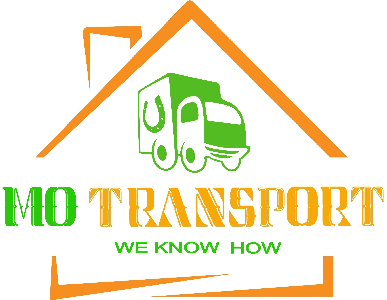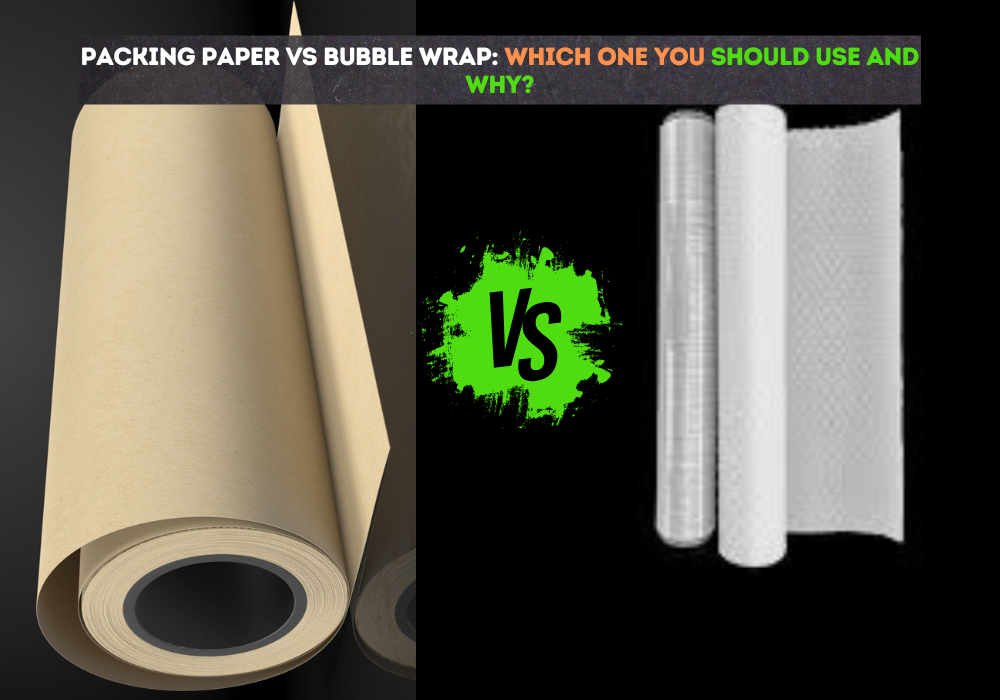Packing paper and bubble wrap are two widely used packaging materials with distinct protective characteristics. Packing paper is a lightweight, cost-effective material that protects objects primarily from scratches, minor surface abrasions, and dust accumulation. It is environmentally friendly, as it is both recyclable and biodegradable, making it preferable for eco-conscious users. However, packing paper provides limited cushioning and does not resist moisture effectively, often necessitating additional waterproofing for fragile or damp-sensitive items.
In contrast, bubble wrap excels in shock absorption, significantly reducing damage from impacts and vibrations during transport. Its water-resistant surface effectively safeguards delicate and moisture-sensitive goods. Despite these strengths, bubble wrap has drawbacks, including environmental concerns due to recycling difficulties, potential static buildup, flammability risks, and its bulky nature, which complicates storage.
Selecting between packing paper and bubble wrap depends clearly on the type and fragility of items being packed. For cost-sensitive, non-fragile goods where basic surface protection suffices, packing paper is a suitable choice. Conversely, bubble wrap should be selected specifically for fragile, breakable items requiring superior cushioning and moisture protection.
Timing and necessity of purchasing packing materials depend directly on the nature of planned usage. Packing paper should be bought when extensive wrapping of non-fragile objects or eco-friendly practices are prioritized. Conversely, bubble wrap purchase is justified when handling delicate, valuable, or moisture-sensitive items.
Both materials are conveniently accessible from retail stores, online marketplaces, or specialized providers like Mo Transport in Bristol, who also offer professional packing services, making the procurement and packing processes streamlined and efficient.
What is Packing Paper?
Packing paper is a thin, flexible wrapping material specifically designed to protect household goods during transportation or storage. This material consists of unprinted paper fibers, making it ideal for safeguarding delicate surfaces from scratches, dust, and minor abrasions. Packing paper adapts seamlessly to various object shapes and sizes, allowing efficient packing while remaining lightweight. Furthermore, it is environmentally sustainable, as packing paper is both recyclable and biodegradable, positioning it as an eco-friendly packaging solution favored by environmentally-conscious users.
What is Bubble Wrap?
Bubble wrap is a protective packaging material made from transparent polyethylene plastic featuring regularly spaced, air-filled bubbles. These embedded air pockets deliver superior shock absorption and cushioning, significantly minimizing the risk of damage due to impacts, vibrations, and moisture during transit. Bubble wrap’s structure explicitly prioritizes the protection of fragile and valuable items, making it a preferred choice when packing sensitive products such as electronics, glassware, and ceramics. Although highly effective for cushioning, bubble wrap presents environmental challenges, primarily because it is less straightforward to recycle than paper-based alternatives.
What are the Advantages and Disadvantages of Using Packing Paper?
Packing paper is a protective wrapping solution used for transporting items securely. Evaluating its advantages and disadvantages ensures users select packaging effectively according to item fragility and environmental priorities.
| Advantages of Packing Paper | Disadvantages of Packing Paper |
| 1. Protects items against scratches and minor surface damage effectively preserves surfaces during transit. | 1. Provides limited shock absorption insufficient cushioning for fragile objects compared to bubble wrap. |
| 2. Cost-effective when purchased in bulk reduces expenses in extensive packing operations. | 2. Not moisture-resistant demands additional waterproofing to prevent potential water damage. |
| 3. Environmentally friendly as it is recyclable and biodegradable supports eco-conscious packing practices. | 3. Requiring large amounts for adequate protection of fragile items increases material usage significantly. |
| 4. Lightweight and easy to handle facilitates rapid and efficient packing processes. | 4. Potential ink transfer when newsprint is used may stain and damage sensitive or porous items. |
| 5. Versatile enough to wrap items of various shapes and sizes precisely ensures adaptability to diverse packing requirements.6. Readily available through multiple retail and online suppliers ensures easy accessibility for immediate use. | 5. Creates clutter and mess during unpacking extends cleanup duration post-delivery. |
Choosing packing paper is beneficial when surface protection, affordability, and environmental impact are key priorities. However, additional protective materials become necessary when higher levels of cushioning or moisture resistance are required.
What are the Advantages and Disadvantages of Using Bubble Wrap?
Bubble wrap, commonly utilized in packaging, provides effective protection for fragile and sensitive items. Analyzing its clear advantages and disadvantages assists in precise decision-making for diverse packaging scenarios.
| Advantages of Bubble Wrap | Disadvantages of Bubble Wrap |
| 1. Provide excellent shock absorption significantly reduces impact damage during transportation. | 1. Creates significant environmental impact due to plastic material, negatively affecting sustainability efforts. |
| 2. Lightweight composition allows easy handling and reduces shipping costs effectively. | 2. Faces recycling challenges caused by limited polyethylene recycling options, complicating disposal processes. |
| 3. Highly versatile material easily conforms around items of varied shapes and sizes, ensuring thorough coverage. | 3. Requires bulky storage space making it less practical for limited storage environments or small facilities. |
| 4. Reusable multiple times offering cost-effective protection over extended periods of repeated usage. | 4. Generates static buildup potentially harmful to sensitive electronic items without anti-static treatments. |
| 5. Effectively water-resistant provides reliable moisture protection, suitable for damp or humid conditions. | 5. Presents flammability risks due to polyethylene composition, necessitating careful handling near heat sources. |
Selecting bubble wrap specifically matches needs when superior protection, moisture resistance, and reusability are priorities. However, careful consideration of environmental impact, recycling issues, and storage constraints ensures optimal packaging decisions.
Does bubble wrap offer better shock absorption than packing paper?
Yes, bubble wrap provides better shock absorption than packing paper. Bubble wrap contains polyethylene air-filled pockets explicitly engineered to cushion impacts, making it effective for protecting fragile items such as electronics or glassware. Conversely, packing paper offers minimal cushioning, primarily preventing only scratches or minor abrasions without significant protection against strong impacts.
How does packing paper differ from bubble wrap?
Packing paper differs from bubble wrap in material, cushioning capability, and environmental impact. Packing paper is composed of biodegradable paper fibers, ideal for surface protection and environmentally conscious use. Bubble wrap, made of plastic with air-filled bubbles, specifically cushions impacts and resists moisture effectively. Packing paper protects primarily against minor damage, while bubble wrap serves as protection for fragile items requiring substantial shock absorption.
When should I use packing paper instead of bubble wrap?
Use packing paper instead of bubble wrap for items requiring surface protection with minimal cushioning, or when prioritizing eco-friendly packing. Examples include packing books, kitchen utensils, ceramics, or non-fragile decorative items during short-distance moves. In these scenarios, packing paper sufficiently prevents scratches without unnecessary cushioning, maintaining practicality and environmental responsibility.
Is packing paper more cost-effective than bubble wrap?
Yes, packing paper is more cost-effective than bubble wrap. Packing paper consists of simple cellulose fibers, making production inexpensive and pricing notably lower, typically around 25% cheaper than bubble wrap in bulk purchases. This price advantage enables businesses to reduce packaging costs effectively during extensive packing projects, particularly when handling non-fragile items needing basic surface protection.
Is packing paper biodegradable and recyclable?
Yes, packing paper is biodegradable and recyclable. Being manufactured from natural cellulose paper fibers, it decomposes fully in natural environmental conditions without causing ecological harm. Moreover, packing paper is widely accepted at recycling centers, allowing efficient reprocessing into new paper products. This comprehensive recyclability significantly reduces landfill waste and promotes sustainable packaging practices.
Can bubble wrap be recycled or reused sustainably?
Bubble wrap can be reused sustainably but faces substantial recycling challenges. Bubble wrap typically consists of polyethylene, a theoretically recyclable plastic, yet many standard recycling facilities reject it due to sorting complexity and contamination risks. Therefore, the primary sustainable practice involves reuse, such as repeated protective packaging or storage purposes, rather than relying on consistent recycling options.
Where can I buy packing material in Bristol?
You can buy packing material directly from Mo Transport in Bristol. Mo Transport provides essential packing supplies, including boxes, bubble wrap, packing paper, and padding, to residents and businesses throughout Bristol.
Can movers also offer packing material in Bristol?
Yes, movers in Bristol also offer packing materials. Some movers include these materials within their overall moving service packages, while others charge separately. Movers that charge separately typically specify costs clearly on invoices or initial estimates.
Who offers the best packing services in Bristol?
Mo Transport offers the best packing services in Bristol. Mo Transport consistently provides high-quality packing and unpacking solutions, using reliable materials and trained professionals, ensuring customer satisfaction and safety for residential and commercial moves.
Why should I hire Mo Transport for packing services in Bristol?
You should hire Mo Transport for packing services in Bristol because we provide experienced professionals, comprehensive packing and unpacking services, transparent pricing, insured protection, and flexible scheduling tailored specifically to your moving needs.
- Experienced and Professional Team: We provide professionally trained packers who carefully handle residential and commercial belongings to minimize potential damage during transit.
- Comprehensive Packing and Unpacking Services: We systematically pack your belongings, clearly label each item for efficient unpacking, and organize your new space promptly upon arrival.
- Eco-Friendly Packing Materials: We consistently use recyclable and biodegradable materials, aligning explicitly with sustainability and environmental responsibility.
- Transparent and Competitive Pricing: We explicitly state all costs upfront without hidden charges, allowing accurate budget management for clients.
- Fully Insured Packing and Moving: We provide comprehensive insurance coverage to explicitly protect your belongings from damage or loss throughout packing and transportation.
- Flexible Scheduling and Availability: We schedule packing services around your convenience explicitly, accommodating your specific timing to avoid disruptions.
- Strong Reputation and Positive Customer Reviews: We consistently achieve positive client feedback explicitly highlighting our reliability, efficiency, and high-quality service.
- Personalized Customer Approach: We tailor packing solutions specifically according to your individual requirements, ensuring a customized and efficient relocation process.
These clearly defined advantages provide confidence and reliability when choosing our packing services, ensuring your move is secure and stress-free. The detailed description of our structured packing process follows.
What is the process of Booking Mo Transport for packing services in Bristol?
The process of booking Mo Transport for packing services in Bristol involves structured, logical steps clearly designed to ensure a secure, organized, and efficient relocation.
- Contact Us at Mo Transport for a Quote: Clearly inform us about your specific packing requirements, enabling us to promptly provide an accurate and comprehensive quotation tailored explicitly to your needs.
- Book Your Packing Service Date: After accepting our detailed quotation, explicitly confirm a convenient date for our team to carry out the packing process, aligning clearly with your schedule.
- Team Arrives to Pack Your Belongings: Our packing professionals arrive punctually and methodically pack your belongings, clearly labeling each item, ensuring secure handling and efficient unpacking later.
- Items Safely Transported to Your Destination: We explicitly transport your securely packed items directly to your specified destination, carefully handling them throughout the transit to ensure their safety and timely arrival.

